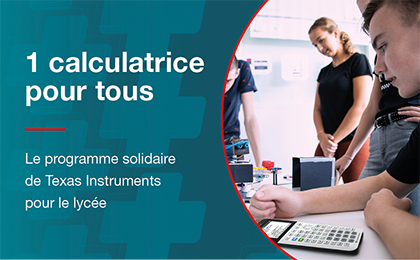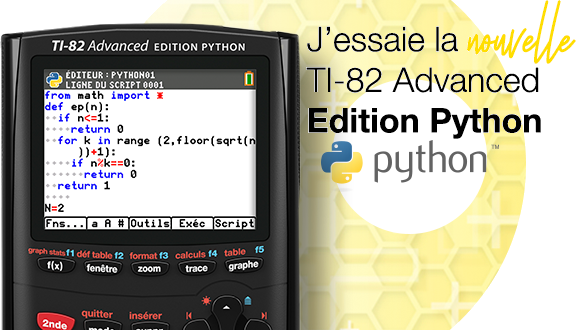Partie 1 - Question 1) :
\phantom{f'(x)}=\ln(x+1)+\dfrac{x+1}{x+1}-3\\
\phantom{f'(x)}=\ln(x+1)+1-3\\
\phantom{f'(x)}=\ln(x+1)-2}$mathjax$
Partie 1 - Question 2) :
\phantom{f'(x)≥0}\Leftrightarrow \ln(x+1)≥2\\
\phantom{f'(x)≥0}\Leftrightarrow \mathrm{e}^{\ln(x+1)}≥\mathrm{e}^2 (*)\\
\phantom{f'(x)≥0}\Leftrightarrow x+1≥\mathrm{e}^2\\
\phantom{f'(x)≥0}\Leftrightarrow x≥\mathrm{e}^2-1}$mathjax$
Or,
(*) car la fonction exponentielle est croissante
De plus,
\phantom{f(0)}=1 \ln(1)-0+7\\
\phantom{f(0)}=0+7\\
\phantom{f(0)}=7}$mathjax$
\phantom{f(20)}=21 \ln(21)-60+7\\
\phantom{f(20)}=21 \ln(21)-53}$mathjax$
\phantom{f\left(\mathrm{e}^2-1\right)}=\mathrm{e}^2\ln(\mathrm{e}^2)-3\mathrm{e}^2+3+7\\
\phantom{f\left(\mathrm{e}^2-1\right)}=\mathrm{e}^2\times 2-3\mathrm{e}^2+10\\
\phantom{f\left(\mathrm{e}^2-1\right)}=-\mathrm{e}^2+10}$mathjax$
Donc :

Partie 1 - Question 3) :
\phantom{f'(0)}=\ln(1)-2\\
\phantom{f'(0)}=0-2\\
\phantom{f'(0)}=-2}$mathjax$
L'inclinaison au point B est donc de 2.
Partie 1 - Question 4) :
On remarque que
Une primitive de f est donc donnée par
\phantom{F(x)}=\dfrac{1}{2}(x+1)^2\ln(x+1)-\dfrac{1}{4}x^2-\dfrac{1}{2}x-\dfrac{3}{2}x^2+7x\\
\phantom{F(x)}=\dfrac{1}{2}(x+1)^2\ln(x+1)-\dfrac{1}{4}x^2-\dfrac{1}{2}x-\dfrac{6}{4}x^2+\dfrac{14}{2}x\\
\phantom{F(x)}=\dfrac{1}{2}(x+1)^2\ln(x+1)-\dfrac{7}{4}x^2+\dfrac{13}{2}x}$mathjax$
Partie 2 - Question 1) :
La hauteur du point le plus bas est
\phantom{f(\mathrm{e}^2-1)}=10-\mathrm{e}^2\\
\phantom{f(\mathrm{e}^2-1)}\approx 2,6}$mathjax$
D'autre part,
\phantom{f(\mathrm{e}^2-1)}\approx 10,9}$mathjax$
La hauteur du point le plus haut est donc
Par conséquent
Donc P1 est vraie : la différence est f(20)-f(0) est au moins égale à 8 mètres.
\phantom{f'(20)}=\ln(21)-2\\
\phantom{f'(20)}\approx 1,04}$mathjax$
Donc P2 est vraie : l'inclinaison de 2 de la piste en B est presque deux fois plus grande qu'en C.
Partie 2 - Question 2) :
Calculons l'aire des quatre faces latérales :
\phantom{A_{ODCB}=A_{AD'C'B'}}=\left[F(x)\right]_0^{20}\\
\phantom{A_{ODCB}=A_{AD'C'B'}}=\left[\dfrac{1}{2}(x+1)^2\ln(x+1)-\dfrac{7}{4}x^2+\dfrac{13}{2}x\right]_0^{20}\\
\phantom{A_{ODCB}=A_{AD'C'B'}}=\dfrac{1}{2}(20+1)^2\ln(20+1)-\dfrac{7}{4}20^2+\dfrac{13}{2}20-\left(\dfrac{1}{2}(0+1)^2\ln(0+1)-\dfrac{7}{4}0^2+\dfrac{13}{2}0\right)\\
\phantom{A_{ODCB}=A_{AD'C'B'}}=\dfrac{1}{2}21^2\ln(21)-\dfrac{7}{4}400+13\times 10-\left(\dfrac{1}{2}1^2\ln(1)-\dfrac{7}{4}0+0\right)\\
\phantom{A_{ODCB}=A_{AD'C'B'}}=\dfrac{1}{2}441\ln(21)-7\times 100+130-\left(\dfrac{1}{2}1\times 0-0\right)\\
\phantom{A_{ODCB}=A_{AD'C'B'}}=\dfrac{1}{2}441\ln(21)-700+130-0\\
\phantom{A_{ODCB}=A_{AD'C'B'}}=\dfrac{1}{2}441\ln(21)-570}$mathjax$
OAB'B étant un rectangle,
\phantom{A_{OAB'B}}=10\times f(0)\\
\phantom{A_{OAB'B}}=10\times 7\\
\phantom{A_{OAB'B}}=70}$mathjax$
OD'C'C étant un rectangle,
\phantom{A_{OD'C'C}}=10\times f(20)\\
\phantom{A_{OD'C'C}}=10\left(21\times \ln(21)-53\right)\\
\phantom{A_{OD'C'C}}=210\times \ln(21)-530}$mathjax$
Donc, l'aire totale est
\phantom{A}=2A_{ODCB}+A_{OAB'B}+A_{OD'C'C}\\
\phantom{A}=2\left(\dfrac{1}{2}441\ln(21)-570\right)+70+210\times \ln(21)-530\\
\phantom{A}=441\ln(21)-1140-460+210\times \ln(21)\\
\phantom{A}=651\ln(21)-1600}$mathjax$
Comme
\phantom{\dfrac{A}{5}}\approx 76,4}$mathjax$
Partie 2 - Question 3)a) :
Dans le repère (O;I,J),
(O;I,J) étant orthonormal,
\phantom{B_{k}B_{k+1}}=\sqrt{(k+1-k)^2+\left(f(k+1)-f(k)\right)^2}\\
\phantom{B_{k}B_{k+1}}=\sqrt{1^2+\left(f(k+1)-f(k)\right)^2}\\
\phantom{B_{k}B_{k+1}}=\sqrt{1+\left(f(k+1)-f(k)\right)^2}}$mathjax$
Partie 2 - Question 3)b) :
Il s'agit ici d'additionner les aires de tous les rectangles BkBk+1B'k+1B'k.
Les rectangles extrêmes sont B0B1B'1B'0 pour k=0 et B19B20B'20B'19 pour k=19.
Cela implique de faire varier K de 0 à 19 :
- Code: Select all
Pour K variant de 0 à 19
Remarque : On pouvait noter que cette réponse figurait déjà dans l'énoncé de la question 3)a).
Pour l'addition on utilise donc la variable S, somme initialisée à 0. On y rajoute quelque chose de la façon suivante :
- Code: Select all
S prend la valeur S+...
La valeur à rajouter est l'aire du rectangle BkBk+1B'k+1B'k, c'est-à-dire d'après la question 3)a)
\phantom{A_{B_kB_{k+1}B'_{k+1}B'_k}}=\sqrt{1+\left(f(k+1)-f(k)\right)^2}\times 10\\
\phantom{A_{B_kB_{k+1}B'_{k+1}B'_k}}=10\sqrt{1+\left(f(k+1)-f(k)\right)^2}}$mathjax$
- Code: Select all
S prend la valeur S+10√(1+(f(k+1)-f(k))²)
D'où l'algorithme ainsi complété :
- Code: Select all
Variables :
S: réel
K: entier
Fonction :
f: définie par f(x)=(x+1)\ln(x+1)-3x+7
Trairement :
S prend pour valeur 0
Pour K variant de 0 à 19
S prend la valeur S+10√(1+(f(k+1)-f(k))²)
FinPour
Afficher S








 )
)











